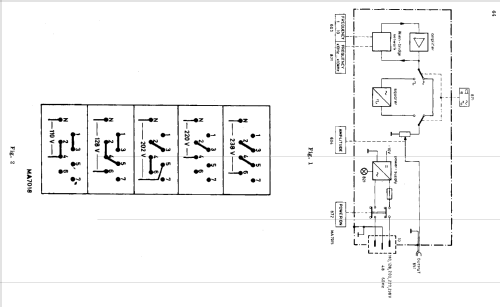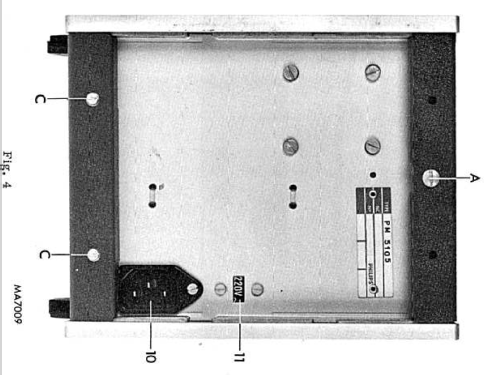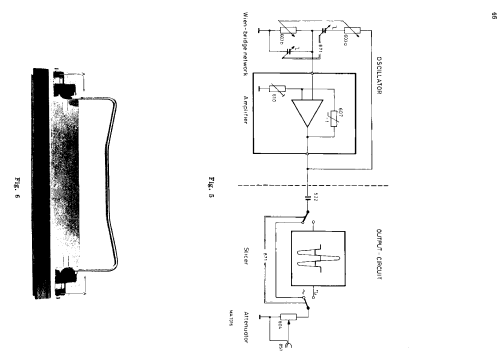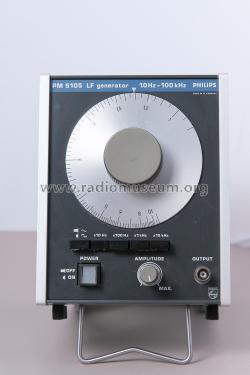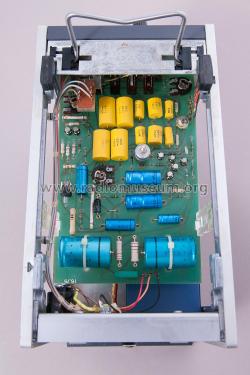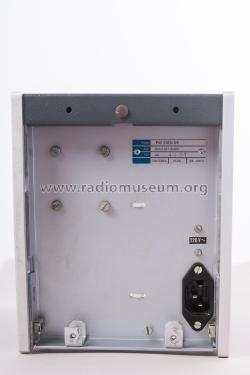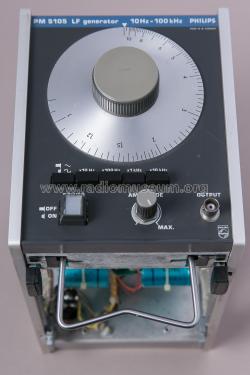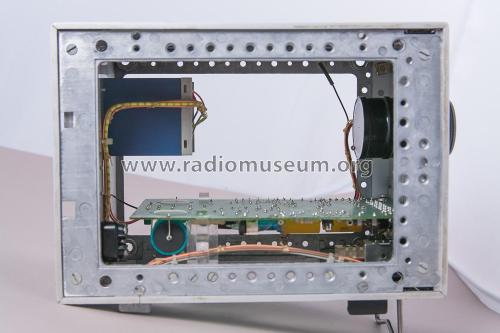LF Generator PM 5105/07
Philips Radios - Deutschland
- País
- Alemania
- Fabricante / Marca
- Philips Radios - Deutschland
- Año
- 1970 ??
- Categoría
- Aparato de medida y servicio (Equipo de laboratorio).
- Radiomuseum.org ID
- 211148
-
- Brand: Deutsche Philips-Ges.
Haga clic en la miniatura esquemática para solicitarlo como documento gratuito.
- Numero de transistores
- 12
- Semiconductores
- Principio principal
- Amplificador de Audio
- Gama de ondas
- Bandas de recepción puestas en notas.
- Tensión de funcionamiento
- Red: Corriente alterna (CA, Inglés = AC) / 110; 220 Volt
- Altavoz
- - Este modelo usa amplificador externo de B.F.
- Material
- Metálico
- de Radiomuseum.org
- Modelo: LF Generator PM 5105/07 - Philips Radios - Deutschland
- Forma
- Sobremesa de cualquier forma, detalles no conocidos.
- Ancho, altura, profundidad
- 180 x 140 x 250 mm / 7.1 x 5.5 x 9.8 inch
- Anotaciones
- Philips LF-Generator PM5105;
Niederfrequenz-Generator 10 Hz bis 100 kHz in 4 Bereichen,
Kurvenform Sinus oder Rechteck umschaltbar,
Innenwiderstand/Impedanz 600 Ohm,
Ausgangsspannung max. 20 Vss, stufenlos regelbar (ungeeicht),
Ausgang unsymmetrisch auf BNC-Buchse.
Generatore di segnali LF (Low Frequency) da 10Hz a 100kHz con forma sinusoidale o rettangolare.
- Peso neto
- 2.7 kg / 5 lb 15.2 oz (5.947 lb)
- Autor
- Modelo creado por Antonio Marra. Ver en "Modificar Ficha" los participantes posteriores.
- Otros modelos
-
Donde encontrará 2549 modelos, 2261 con imágenes y 1566 con esquemas.
Ir al listado general de Philips Radios - Deutschland
Colecciones
El modelo LF Generator es parte de las colecciones de los siguientes miembros.
Contribuciones en el Foro acerca de este modelo: Philips Radios -: LF Generator PM 5105/07
Hilos: 2 | Mensajes: 7
I have a Philips PM 5105 Low Frequencies Generator and I need some tips for the alignment.
I have the service manual but the alignment potentiometers and trimmers (610, 516, 513, 605 and 621-523) are not sufficient to make the equipment work as it should.
As an example, the 400 Hz scale is reading 316 Hz on my oscilloscopes (Hantek and Siglent).
1 KHz is reading 2,4 KHz on the oscilloscopes.
The tension on the diode 452 is -16,7 V as expected.
Maybe the equipment is consuming more than the specified: It should be 4,5 W but I did measure 7,1 W on a non reliable meter. The same device is measuring 80mA for the PM 5105.
I did try the equipment (the first time that I did turn it on) on a dim bulb tester and variac and it was OK.
I did try to adjust it on the trimmers according with the manual to no avail.
Are the electrolytics the culprits? Are the transistors?
Thanks,
Alvaro Georg
Alvaro Georg, 14.Mar.23
Diesen Generator habe ich an Schulen inkl. Fachhochschule, in Lehrwerkstätten und auch in Reparatur Werkstätten angetroffen. Der Grund ist einfach:
- Klare und einfach Bedienung
- sehr sauberes Sinus Signal mit tiefem Klirrfaktor dank Wienbrücke
- einfache und dennoch robuste Schaltungstechnik
- sehr reparaturfreundlich, gut dokumentiert und gängige, gut beschaffbare Teile
- erstaunlich lange Lebensdauer, hält sich gut , kein Rost, dafür langlebige Bauteile
Für mich ein tolles Stück Analogtechnik. Besonders erfreulich, dass nun im Netz auch noch das Service Manual zu finden war.
Wünsche jedem Besitzer viel Freude an diesem tollen Generator.
Hermann Mettler, 05.May.21
